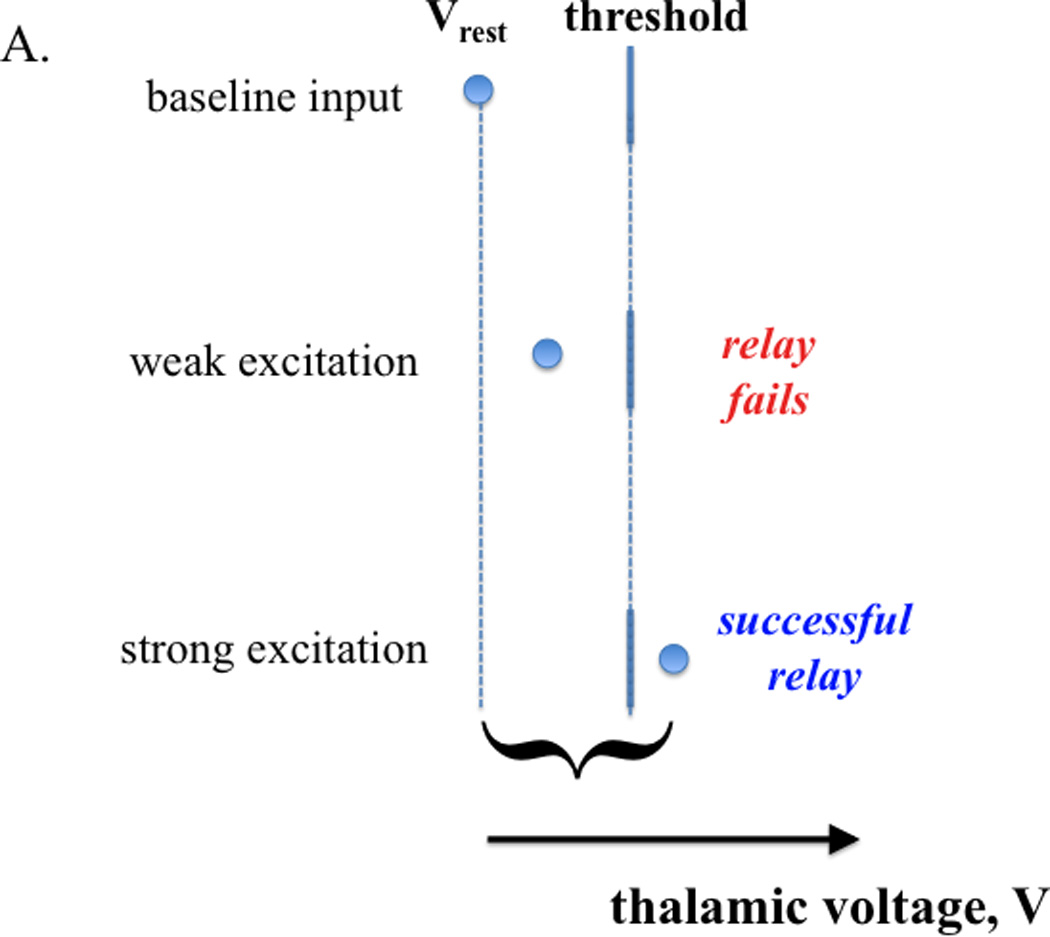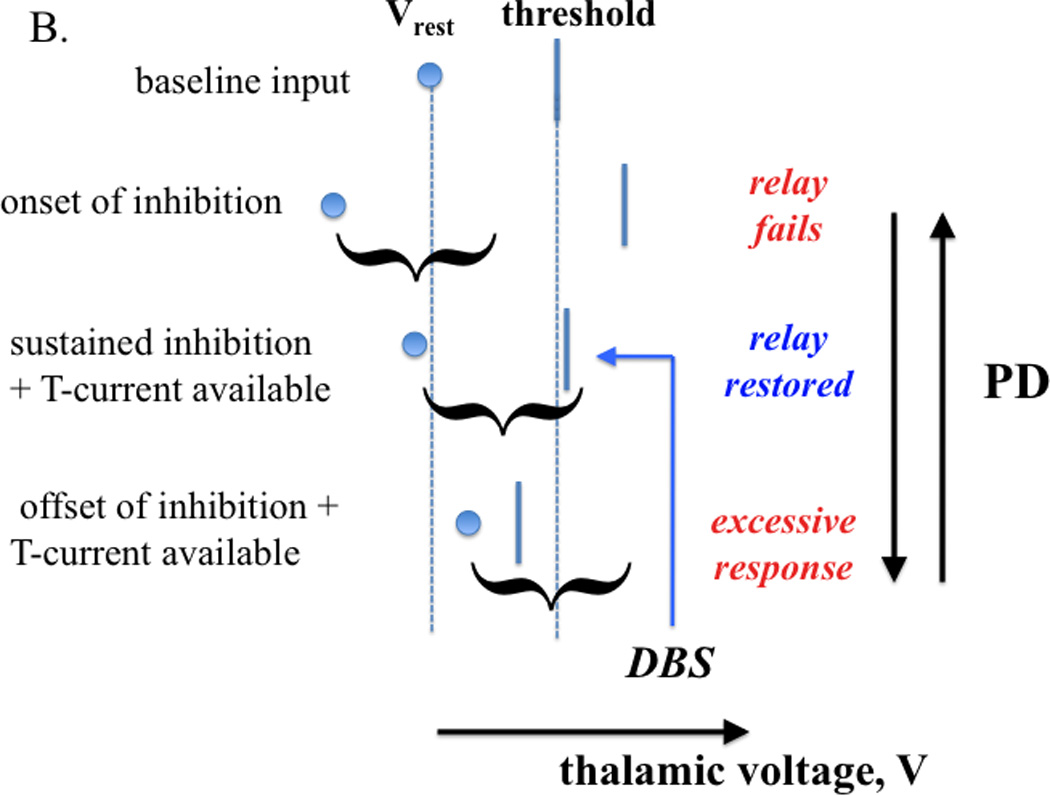Figure 3.


Inhibition influences thalamic relay capability (schematic illustration). A. Baseline input conditions establish a rest potential and a threshold for action potential generation (top). If an excitatory input arrives, a successful relay response (i.e., spike generation) is determined by the strength of that input relative to the separation between rest potential and threshold (middle, bottom); a sufficiently input strength to yield relay is represented by a curly bracket. B. Parkinsonian conditions are characterized by oscillations in the inhibitory input to thalamus (from GPi). At the onset of strong inhibition, a formerly relay-inducing excitatory input fails to yield relay (top). If inhibition is sustained, T-current deinactivation can restore relay by raising rest potential and lowering threshold (middle). Since T- current inactivation is slow, the arrival of the same input after a relatively abrupt withdrawal of inhibition can yield an excessive response (bottom). One possibility is that DBS of STN pins the inhibitory input from GPi to thalamus at a high level, where relay is restored by T-current availability.
